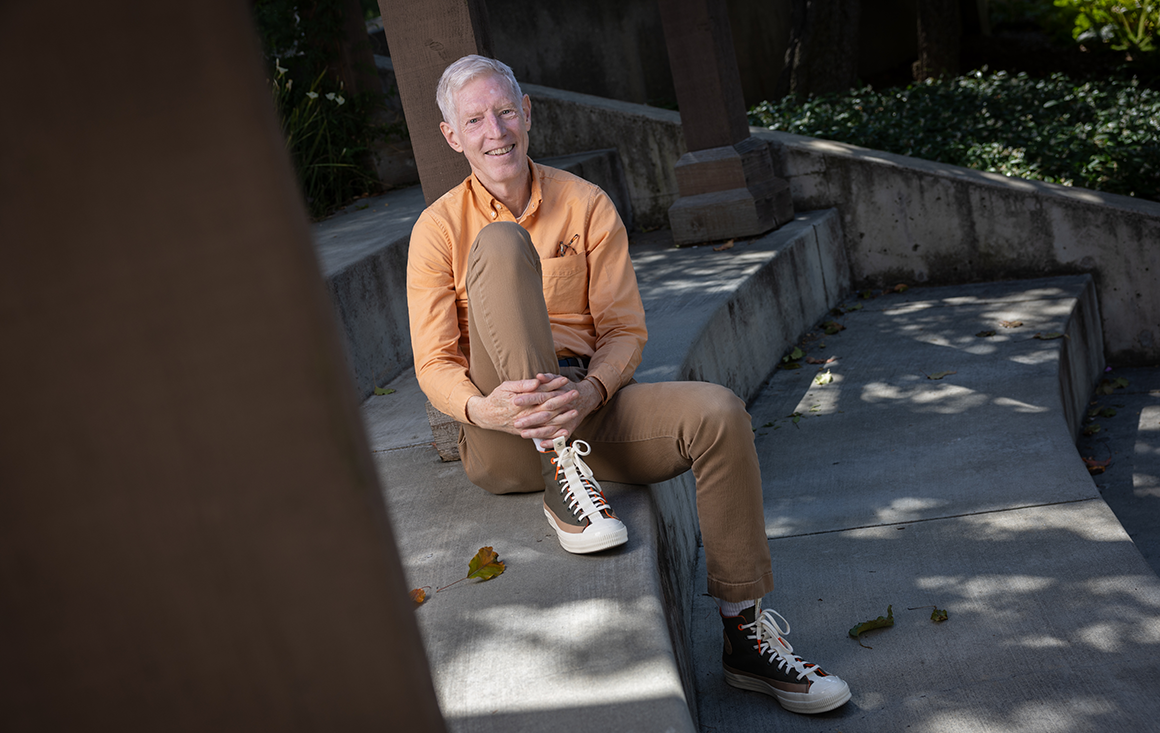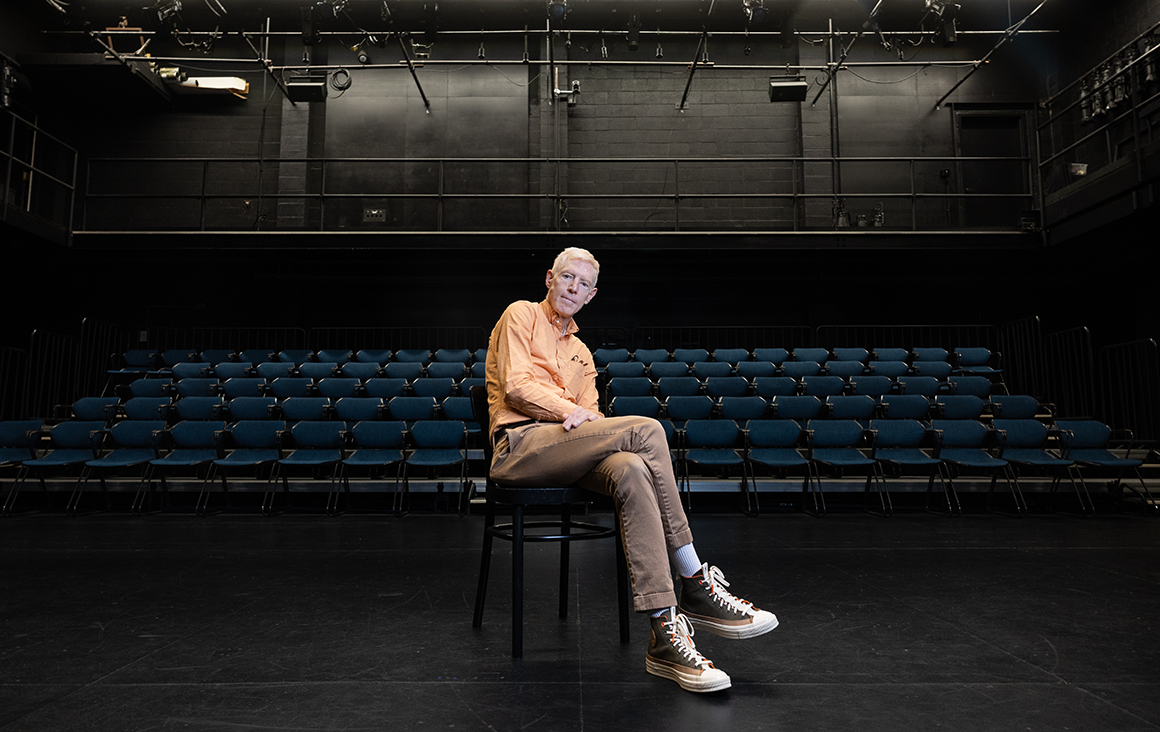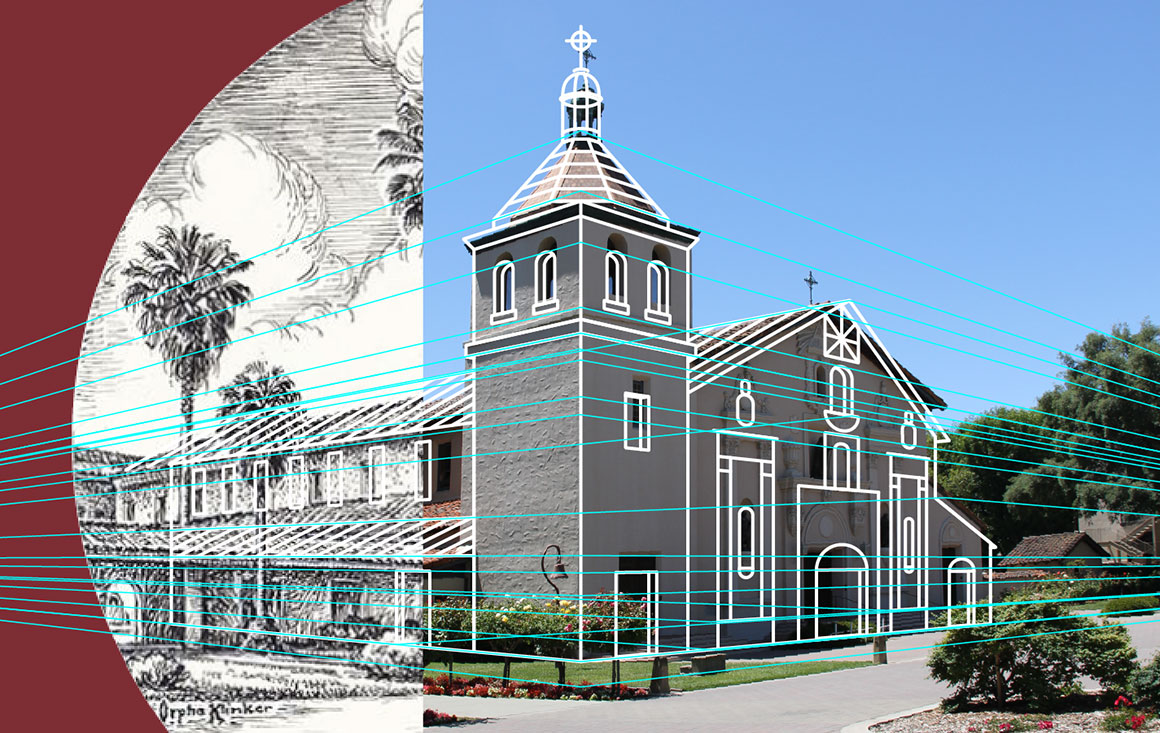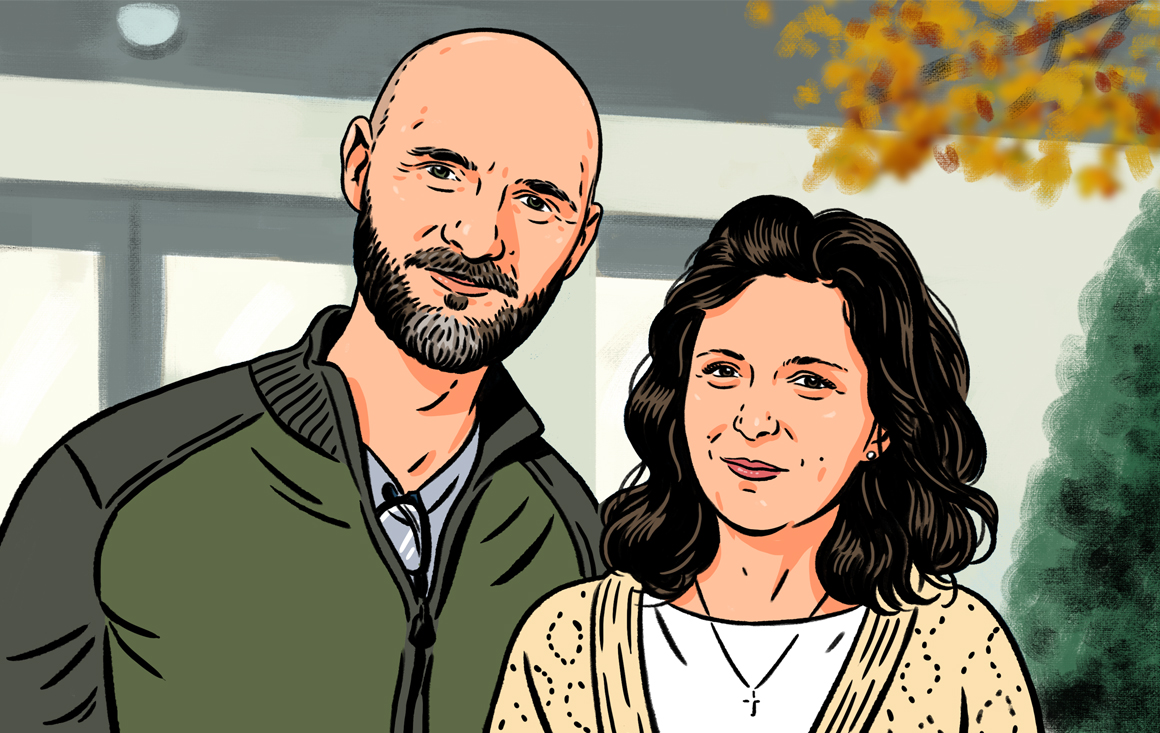A New Act Begins

In her play, “Shoshitsu,” Emma Hokoda ’20 tells the story of a dystopian future where Japan’s iconic cherry blossom trees no longer bloom due to climate change. Named after the Japanese word for “disappearance,” the play reckons with what it means to lose something that cannot be brought back.
When Hokoda wrote “Shoshitsu” four years ago as a senior, it was only her fifth class in the theater department, but longtime playwrighting professor Brian Thorstenson helped the environmental studies major translate the science she studied in the classroom to a stage-ready story that was showcased in that year’s New Playwrights’ Festival. Thorstenson launched this annual festival in 2004 to offer his advanced playwrighting students a chance to stage readings of their work in front of an audience. Hokoda was counting on this connection with her audience.
“I wanted this play to explore how art can have an emotional and intellectual impact on a person that goes beyond politics. I hoped to bring people into the climate crisis by connecting them to environmental catastrophes on a human level,” Hokoda explains. “Seeing it performed really lit a fire under me to keep fighting the fight for climate justice.”
Today, Hokoda is a Fulbright scholar and graduate of Notre Dame’s master of global affairs program, but she considers Thorstenson’s mentorship as pivotal to her current career and she’s not alone.
Across his 22 years of teaching at Santa Clara University, the theatre professor has encouraged his students to follow their passions from securing jobs at Netflix and law firms, to opening high school theaters and performing in the San Francisco drag scene.
This year marked the 20th anniversary of the New Playwrights’ Festival, and to celebrate, Thorstenson invited Hokoda and other festival alums—Marissa Martinez ’16, Anthony Sampson ’20, Nic Sommerfeld ’12, and Alexis Standridge ’21—to be part of “Off the Page,” a special showcase where their work would hit the SCU stage again.
For Thorstenson, this was more than a reunion. It was a marker of how much he had accomplished within the department and how much further he could still go. This determination is and always has been driven by a single constant: his care for his students.
“Personally, I’m usually going forward, so when somebody said, ‘It’s the 20th year of the festival,’ I just don’t think that way,” Thorstenson admits. “I have a set of students in front of me right now. That’s what I’m thinking about.”

Setting the stage with compassion
Thorstenson considers theatre to be central to the Jesuit approach to education, and he has the proof to back it up.
When the Order of the Society of Jesus standardized its global system of Jesuit schools in 1599, it required that all Jesuit students should not only see theater and dance productions but participate in them regularly.
“This led to hundreds of thousands of plays being written by Jesuits at Jesuit universities,” explains Thorstenson. “They invented the trapdoor, the scrim, and so much more.”
Not only did the Jesuits shape technical elements of this art form, but they also infused it with their values—a legacy that Thorstenson is committed to continuing.
“When you’re writing a character in a play, you have to take an empathetic step into that character’s shoes. So, with Santa Clara’s mission of creating leaders of conscience, competence, and compassion, I think our department really supplies the compassion.”
And within the theater department, Brian’s compassion in particular comes up time and time again in alumni stories about their time at SCU.
For example, Standridge recalls that she was nervous about being at a Jesuit institution as an out lesbian, but her instant connection with Thorstenson, who is “unabashedly and proudly” gay, was a huge reassurance.
“There was a general consensus within the queer community in the theater department that if you needed anything, you go to Brian,” she adds. “And honestly, not even just the gay kids either. Everyone felt like they could just talk to him about anything that’s going on and be supported.”
Thorstenson has also played a huge role in making the theater department a more welcoming place for students of all backgrounds, particularly first-generation and Black students—something Martinez saw firsthand when she was asked to participate in the Off the Page festival.
She wanted to bring a deeply personal play about Latinx, Filipinx, and Native American farmworkers for the festival, but only under the condition that the roles would be filled by BIPOC actors. Thorstenson assured her that it would be doable.
“And not only was it directed by Karina Gutierrez but it was cast with Latinx students who were perfect for their role. That in and of itself is huge for the theater department,” she says.
Thorstenson agrees that SCU has come far with regard to diversity, but he says this also shows how important it is to continue inviting people in.
“Looking back, casting that show with BIPOC students was not something I could have done for Marissa when she was a student almost 10 years ago, so it meant a lot for me personally to do that for her now,” Thorstenson says.

The next stage
Theater faces a myriad of challenges in the 21st century. Between a tsunami of streaming movies and TV shows and the spate of theater closures during the COVID-19 pandemic, what does the future of theater look like?
That question continues to drive Thorstenson, who was recently named SCU’s Frank Sinatra Chair in the Performing Arts, the program’s first internal Sinatra-Artist-in-Residence. The newly revamped program will give Thorstenson a chance to develop a devised theater project with Detour, a local San Francisco dance-theater ensemble.
“I’ve been working with Detour for the past seven years on a variety of projects, and it’s so exciting that these folks that I work with in San Francisco are all of a sudden going to be
teaching the wonderful things that they know to our students. It’s like my two worlds are colliding.”
What should the SCU community expect from this collaboration?
“It’ll be something that’s maybe never been done at Santa Clara,” Thorstenson says.
As the campus has become more diverse in its student body, he hopes that his devised production with Detour will model this change and keep moving SCU forward.
“It means a lot that SCU is supporting my work with this company that does not shy away from its queerness and is led by two artists of color, Eric Garcia and Kat Gorospe Cole, who are Latino and Filipina respectively.”
Garcia and Gorospe Cole, Thorstenson notes, also have Jesuit backgrounds, having studied at USF. It’s a coincidence that doesn’t feel like a coincidence.
“I think it infuses how they operate—I call it, ‘rigorous generosity.’”
It’s that generosity of spirit that Thorstenson says will guide the second year of his Sinatra Chair term. He is still recruiting students to participate in his devised project with Detour. Devised theater is entirely constructed by the participants, so students from all majors, backgrounds, and theater experience are welcome to bring their whole selves to this unique production.
“I want this project to be facing out to the campus community, opening the doors and saying, ‘Here, come in. This is yours.’”
The Frank Sinatra Chair in the Performing Arts energizes the arts at Santa Clara University, inspiring our students and bringing life to our mission in a way that is tangible: experiencing reality and thinking critically about the world to engage with it constructively.


